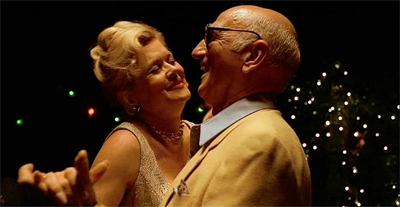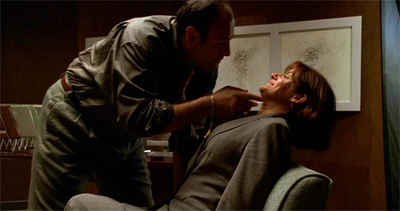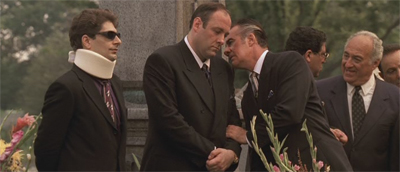The Sopranos was a groundbreaking piece of television that completely changed the rules of television as a medium, with a mob epic that was singularly suited to the opportunities and the constraints of its given medium. Perhaps the best thing that can be said about The Many Saints of Newark is that it at least reinforces how much of the success of The Sopranos was down to its existence of a television show. The Many Saints of Newark demonstrates that so many of the tricks that made The Sopranos so compelling when watched in thirteen-hour seasons become deeply frustrating when condensed to a two-hout movie.
The Many Saints of Newark is a fundamentally flawed film. The most charitable interpretation of the film is that it feels like an attempt to condense an entire season of television down to a cinematic narrative that clocks in at just under two hours. The Many Saints of Newark is a sprawling film, one that spans from the late sixties into the early seventies. It often doesn’t seem to have a singular driving plot, but instead a set of competing subplots that swirl and occasionally cohere around the lead character of Dickie Moltisanti. They gesture broadly at compelling thematic concerns, but without any real clarity or focus.

Clever Dickie.
The Many Saints of Newark hinges on the narrative trickery that made The Sopranos such a compelling watch. It has an expansive cast. There’s a recurring ambiguity about what any of this actually means and what parts of it will be actively important to the resolution of the story. The film is willing to spend extended periods focusing on vignettes involving tertiary supporting cast members, away from the nominal lead. The film’s ending is a very deliberate and pointed anticlimax, one that is very deliberately set up over the film’s runtime, but which still feels designed to confound audience expectations.
All of these elements worked on The Sopranos because the production team had enough room to explore and develop them. The show was dense enough and had enough narrative real estate that credited leads like Lorraine Bracco or Dominic Chianese could disappear for multiple episodes at a time, only to return at pivotal junctures. The show spent enough time developing its narrative threads that sudden curve balls that seemed to derail certain plots instead felt like satisfying and unexpected pay-offs from others. The Many Saints of Newark doesn’t have this luxury. It doesn’t seem expansive, just messy.

Family ties.
Filed under: Non-Review Reviews | Tagged: Alan Taylor, David Chase, dickie moltisanti, film, james gandolfini, michael gandolfini, Movie, non-review review, review, the many saints of newark, the sopranos, Tony Soprano | 2 Comments »




























